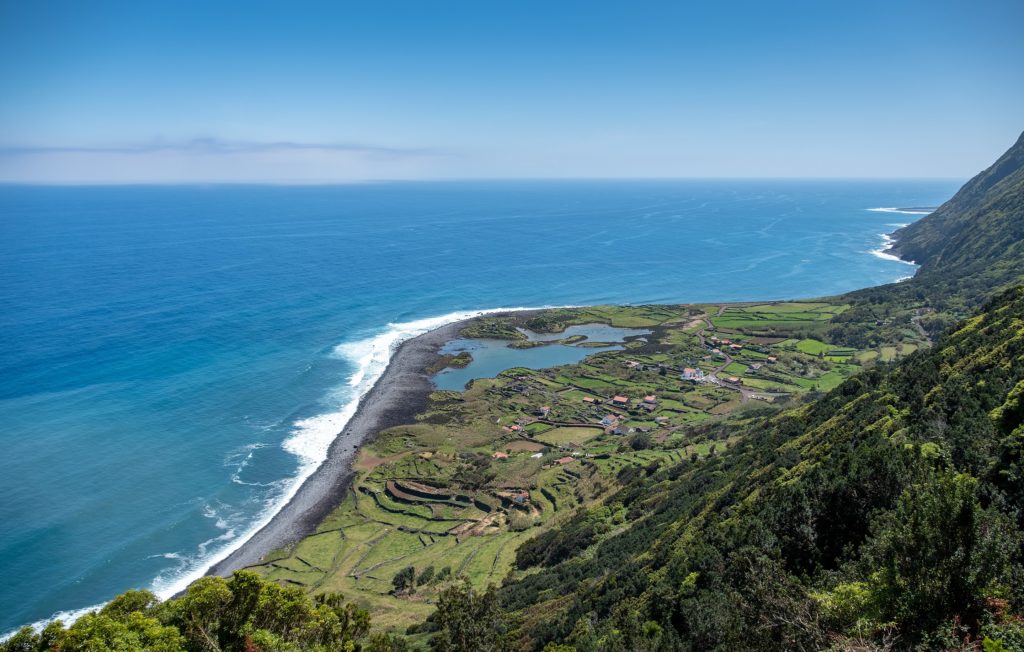
Evacuations have begun on the Azore Island of Sāo Jorge (Sao Jorge) in the Atlantic where more than 12,000 earthquakes have rocked the region in the last week. With ground deformation indicated and measured by Earth observing satellites, it is clear the seismic crisis is being caused by volcanic activity; what isn’t clear is what will happen next. Volcanic eruption, toxic plumes of gas, ash fall, lava flows, and even tsunami are all possible in this region along with flash floods, lahar flows, and landslides due to stormy weather that has impacted the Azores in recent days.
Earlier this week, the Azores Seismovolcanic Information and Surveillance Center (CIVISA) raised the volcano alert level on the Azore Island of Sāo Jorge prompting authorities to prepare for a mass evacuation of the island home to more than 8,300 people. In the seven days, more than 12,000 earthquakes have struck Sāo Jorge, 1 of 9 islands that make up the Azores. While most of the earthquakes were measured by sensitive instruments and not by island residents, more than 100 were. There have been no reports of property damage, injuries, or deaths at this time. Due to the extreme volume of earthquakes in a place that rarely measures such earthquake activity, CIVISA raised the volcano alert to a 4 on a 5-point scale due. In reaction to the raised alert, the Civil Protection agency activated its Regional Emergency Plan. The government is preparing to evacuate roughly 5,000 people from the municipality of Velas while plans are in the works to relocate vulnerable individuals among the population most affected.
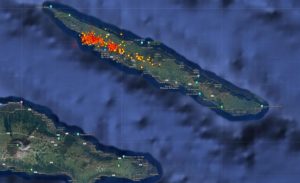
“At the moment, for the Manadas fissure system alone, where this seismic crisis has been taking place for about seven days, we have more than double what was recorded in the entire autonomous region of the Azores in 2021,” said Rui Marques, the leader of CIVISA. “Right now, we have passed the 12,700 earthquakes already registered, of which 187 were felt by the population and only three since midnight today”, said Marques earlier today, adding that the frequency of earthquakes remains “extremely above normal values” to the Azores and that the Level 4 Volcanic Alert continues to be in force which means “real possibility of eruption”.
If an eruption becomes imminent, the bells of the parishes will warn the island population. Luis Silveira, mayor of Velas town on Sao Jorge, said evacuation plans will then unfold on social media networks and on local radio stations.
While a mass evacuation has yet to begin, more than a thousand residents have already fled the island. Officials are estimating that at least 1,250 have fled the island through last night with more planning to leave today. Some vulnerable populations, such as those in healthcare facilities in high-risk zones, are being relocated to other places on the island believed to be at a lower risk level of imminent volcanic hazards.
Officials say air and sea resources have been mobilized to assist with any evacuation while a military support camp is being built within the municipality of Calheta. “The space where the military forces will be stationed is already being prepared,” said mayor Silveira, adding that the space will be “equipped with the necessary conditions, such as water and energy, in a coordination of the municipal services of the Municipality of Calheta.”
While the government will assist with the nearly imminent disaster, residents also need to prepare and take personal action should a volcanic eruption occur. Silveira said, “People must have their backpack prepared with the minimum, namely with a change of clothes, with their medicines, with some basic food.”
Clelio Meneses, who oversees Civil Protection services, said several national and international agencies are preparing for the possible disaster. Beyond regional and national Civil Protection, the National Institute of Medical Emergencies and the international Red Cross are also standing by to provide assistance.
Scientists are drawing parallels between this swarm of earthquakes with a sudden swarm of earthquakes that occured last year on Spain’s La Palma island within the Canary Islands, which is located roughly 870 miles southeast of the Azores; that swarm was followed by a destructive volcanic eruption that persisted much of last year, covering a significant area with lava and/or volcanic ash and cinders. While there’s fears that a destructive volcano can soon erupt, there are also fears that there’d be an Atlantic-wide tsunami; however, USGS and other outlets are quick to point out that such a scenario is unlikely to occur.
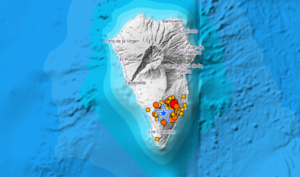
Sāo Jorge Island within the Azores is only 33 miles long and less than 4 miles wide and is home to roughly 8,100 residents. Sao Jorge and the rest of the Azores are an autonomous region from Portugal. The island was formed by volcanic fissure eruptions beginning in the eastern part of the island. The western two-thirds of the island is newer, formed by fissure-fed lava flows. Lava effused from three locations above the south-central coast during 1580, producing flows that reached the ocean. The 1580 eruption claimed 10 lives. Five other significant eruptions occured after the 1580 eruption leading up to a historic eruption on the morning of May 1, 1808. On that day, suffocating gases, as well as carboxylic acid, were emitted from a vent along the Manadas ridge and thick greenish vaporous clouds of chloric and sulfuric acids were reported to spread rapidly among the vegetation on the island, killing them. During that eruption event, multiple powerful earthquakes were recorded each hour, creating widespread panic among those on the island. Due to the earthquakes and resulting volcanic activity, many of the homes, buildings and cultivatable lands were destroyed. The death toll from the 1808 eruption was low, with only 8 recorded deaths.
In the early 1900s, submarine volcanic vents erupted just off shore the island, but no lava has flowed across the island of Sao Jorge since the 1808 volcanic incident.
Scientists with CIVISA, the civil defense agency responsible for monitoring seismic activity there, say they plan to deploy additional equipment to measure signs of volcanic activity. It is possible this swarm is being created by the movement of magma just below the surface which could be sign that a volcanic eruption could come in the coming days or weeks.
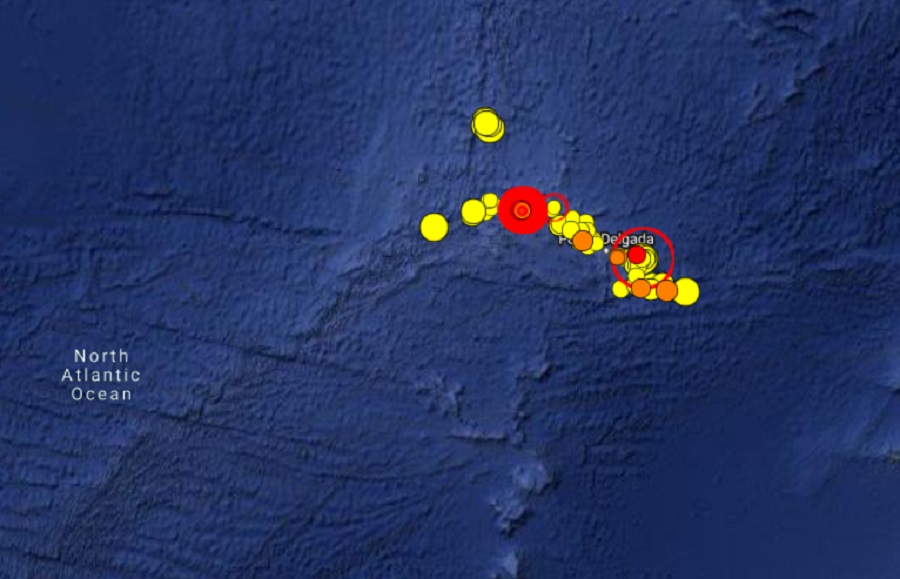
In September 2021, an earthquake swarm began on La Palma Island in the Canary Islands; just days later, an eruption broke-out. That large scale eruption created concern that the volcanic activity could there could trigger a catastrophe on the U.S. East Coast. Some theorized that a large landslide could happen from a volcanic eruption which could trigger a massive mega tsunami across the Atlantic. A “mega tsunami” is an extremely large wave created by a large, sudden displacement of material into a body of water. While typical tsunamis are created by underwater earthquake activity in which a sea floor rise or fall occurs and displaces that water, a mega tsunami is caused when a massive amount of material suddenly falls into the water; this could be created by large meteor impact or by a major landslide, especially of volcanic islands. While a regular tsunami could be as high as 100 feet tall from a powerful earthquake, a mega tsunami could rise hundreds to even thousands of feet high. Because a mega tsunami is so huge, it would be able to travel dozens of miles inland or more very quickly. A BBC docudrama series in 2000 called “End Day” took that the idea of a Canary Island mega-tsunami mainstream, showing water rushing as far into the U.S. East Coast, destroying nearly everything along the way, even far inland. NatGeo TV produced their own show, The Next Mega Tsunami: Killer Waves, discussing the threat of significant seismic events triggering massive waves across the oceans. In 2001, Steven N. Ward and Simon Day proposed in a research article that a change in the eruptive activity of the volcano erupting today and a fracture on the volcano that formed during an eruption in 1949 may be the prelude to a giant collapse. They estimated that such a collapse could cause tsunamis across the entire North Atlantic Ocean and severely impact the United States and Canada.
Ahora mismo en la Palma pic.twitter.com/ecCZaDLuaY
— Mary Arellano Moreno (@mary_aam) September 19, 2021
However, subsequent research has debated whether the tsunami would still have a significant size far away from La Palma, as the tsunami wave may quickly decay in height away from the source and interactions with the continental shelves could further reduce its size. Some evidence indicates that most collapses in the Canary Islands took place as multistage events that are not as effective at creating tsunamis, and a multi-stage collapse at La Palma likewise would result in smaller tsunamis. USGS published articles in October stressing how unlikely a mega tsunami from the Canary Islands volcanic activity is and it is likely the same would be true for a Azores Island eruption too.
An area of low pressure continues to swing through the Azores today, bringing soaking rains and windy conditions to the area. Even without seismic activity, the heavy rain could create landslides on the island’s steep cliffs. Seismic activity combined with heavy rain could increase odds of landslides and slumps around the island.
Should the rain continue if a lava flow reaches the surface, there could also be new hazards introduced to the island. Beyond falling volcanic ash and cinders, the interaction with lava, rain water, and sea water could also create plumes of very dangerous gas.
Volcanic eruptions can emit sulfur dioxide. Impacts from inhaling this foul smelling gas are felt very quickly and most people would feel the worst symptoms in 10 or 15 minutes after breathing it in. Those most at risk of developing problems if they are exposed to sulfur dioxide are people with asthma or similar conditions. Extreme concentrations of sulfur dioxide can be deadly if inhaled. When combined with other substances additional hazards can be created; as an example, rain falling through a sulfur dioxide plume could produce an acid rainfall. Sulfur dioxide is invisible to the human eye, but when it reacts with other gases, aerosol particles can form to cause haze, and according to NASA in extreme widespread events, climate cooling.
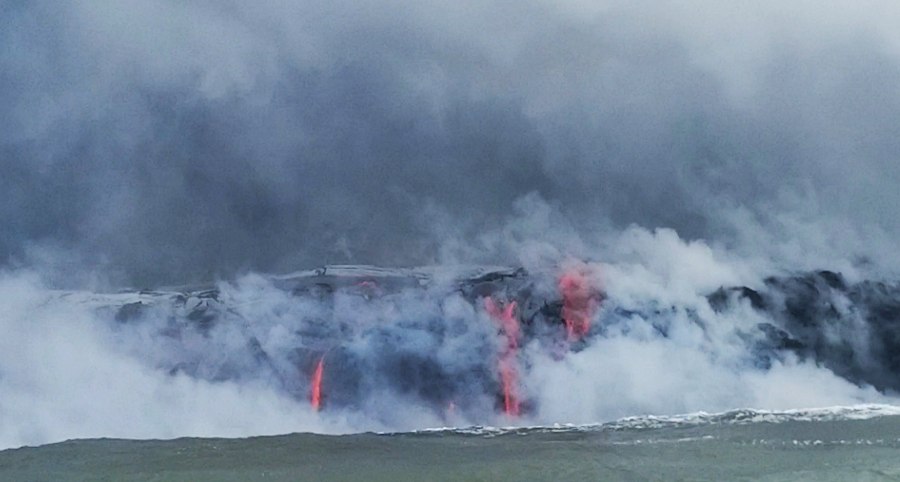
Hydrochloric acid is one of many byproducts from active volcanoes. In addition to releasing heat into the area, volcanoes will eject tephra and various gasses into the air. The largest portion of gases released into the atmosphere is water vapor. Other gases include carbon dioxide (CO2), sulfur dioxide (SO2), hydrogen fluoride (HF), hydrogen sulfide (H2S), carbon monoxide (CO), hydrogen gas (H2), NH3, methane (CH4), and SiF4. Some of these gases are transported away from the eruption on ash particles while others form salts and aerosols. Additional gases are formed when active lava flows burn through vegetation; they also form when lava mixes with water.
Beyond producing problems in the air, the volcano can also create problems on the land as rainwater is mixed with volcanic debris; lahar flows is one such potential problem. A lahar is an Indonesian term that describes a hot or cold mixture of water and rock fragments that flows down the slopes of a volcano and typically enters a river valley. According to USGS, lahars generally occur on or near stratovolcanoes, such as those of the Aleutian volcanic arc in Alaska and the Cascade Range in the Western U.S. Depending where an eruption occurs in the Azores, there could be a lahar flow from near the eruption site(s) to the coast. This occured last year in the Caribbean from a volcanic eruption there.
For now, scientists are deploying new scientific equipment around the island to measure the presence of any volcanic gas and any other ground movements. At this time, no volcanic gas has been detected around the island.
The President of Portugal, Marcelo Rebelo de Sousa, is scheduled to visit Sao Jorge tomorrow if it is still safe for him to do so.